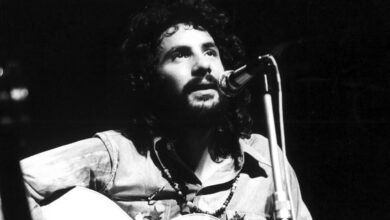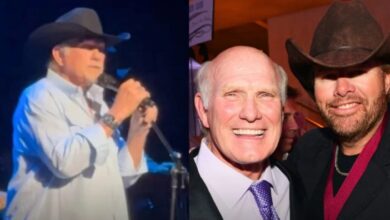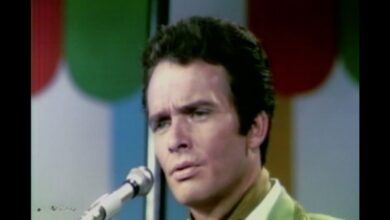The Grass Roots’ “Let’s Live for Today” Captures a Generation’s Urgency and Redefines Psychedelic Pop in 1967
Released in May 1967, during the height of the “Summer of Love,” The Grass Roots’ Let’s Live for Today arrived like a clarion call for a generation caught between hope and upheaval. With its haunting chorus—“Sha-la-la-la-la-la, live for today”—and its layered vocal harmonies, the song stood as a pop anthem of emotional immediacy. Reaching No. 8 on the Billboard Hot 100, it was not just a commercial triumph but also a deeply resonant message in a time of war, protest, and cultural revolution. Though drenched in the colors of pop psychedelia, its impact ran deeper, reflecting both youthful optimism and the sobering awareness of life’s uncertainties. In the process, it became The Grass Roots’ breakthrough hit and a defining moment in late 1960s rock.
The Grass Roots were something of a musical anomaly—part band, part project. Formed by the songwriting and production duo of P.F. Sloan and Steve Barri in Los Angeles, the name “The Grass Roots” was initially used to promote demo recordings by Sloan, before a real performing band was assembled around the idea. The group that eventually came to embody the name by 1967 included lead singer and bassist Rob Grill, alongside Warren Entner, Creed Bratton, and Rick Coonce. What set the group apart was their hybrid approach: folk-rock underpinnings, pop-friendly melodies, garage-rock grit, and later, full-blown psychedelic and horn-driven arrangements. This gave them versatility across radio formats and wide appeal among both pop and rock audiences.
The origins of Let’s Live for Today trace back to Italy, where it was originally recorded as “Piangi Con Me” by The Rokes, a British beat group working overseas. When the song caught the attention of Dunhill Records, new English lyrics were commissioned by Michael Julien. These lyrics, more reflective and urgent than their romantic Italian counterpart, were rooted in the emotional climate of the mid-’60s. The anti-materialist refrain—“No regrets, not tomorrow”—tapped into the growing counterculture sentiment that distrusted the future and cherished the now. P.F. Sloan and Steve Barri recognized the song’s potential and brought it to The Grass Roots, who shaped it into an American pop-rock gem with a distinctive voice.
The recording of Let’s Live for Today captured both a slick pop sensibility and raw emotional resonance. Steve Barri produced the session, blending folk-rock textures with echo-laden guitar work and bold vocal layering. The use of a minor key lent the song an introspective quality, while the insistent rhythm and uplifting harmonies created a paradoxical mood—melancholic yet liberating. Rob Grill’s lead vocal, cool and detached yet filled with quiet conviction, anchored the track, while the group’s harmonized “sha-la-la” chorus became one of the most instantly recognizable hooks of the era. It was a perfect marriage of catchy songwriting and timely sentiment.
The song’s release in May 1967 met with immediate radio play and strong sales. Within weeks, it began climbing the Billboard charts, eventually peaking at No. 8 and holding its position among hits from The Beatles, Jefferson Airplane, and Aretha Franklin. Its success wasn’t confined to the U.S.—the single found traction in Canada and Australia as well. For The Grass Roots, Let’s Live for Today became their defining hit, the one that moved them from the fringes of the pop-rock scene into national visibility. The single’s momentum also drove the album of the same name, giving the band its first gold-certified LP.
More than just a chart success, Let’s Live for Today became a cultural barometer. Released at a time when the Vietnam War was escalating and the counterculture movement was blooming, the song offered a less confrontational, more introspective reflection of the era’s anxiety. It didn’t protest overtly—it mourned the burden of a future that seemed increasingly uncertain. Its message was one of spiritual survival, encouraging listeners to find peace in the moment. This made it accessible to both mainstream audiences and those on the fringes of the social revolution, bridging gaps in an increasingly polarized nation.
The song’s success had a transformative effect on The Grass Roots’ career. Following Let’s Live for Today, the band became a staple on the radio, with a string of Top 40 hits including “Midnight Confessions,” “Temptation Eyes,” and “Sooner or Later.” It opened doors to nationwide tours, television appearances on shows like American Bandstand, and a permanent place in the 1960s pop-rock lexicon. Rob Grill emerged as the band’s recognizable frontman, and his cool confidence would define their image through the early ’70s.
The track’s stylistic fusion of folk, pop, and subtle psychedelia helped lay groundwork for what would become a broader genre of “sunshine pop” and proto-soft rock. Bands like The Association, The Turtles, and later Bread would take cues from the blend of vocal harmony and radio-ready polish. Even more than its sonic influence, the song’s existential themes prefigured later singer-songwriter introspection that would come to define the early ’70s.
Let’s Live for Today has been covered and reimagined by several artists, but rarely with the same emotional impact as the original. The Rokes’ Italian version remains a curious footnote, while American garage-rock acts and even punk bands like The Lords of Altamont would revisit the track in later decades, emphasizing its darker undertones. The Living End, an Australian rock band, gave it a punk-inflected remake, highlighting the song’s lasting ability to adapt to different moods and eras.
For The Grass Roots, the summer of 1967 was not just their commercial peak but a moment of artistic coherence. Though later internal struggles and lineup changes would alter their course, this period marked the band at their most cohesive and culturally relevant. The release coincided with the early stages of the Monterey Pop Festival, a landmark moment in rock history, and while The Grass Roots didn’t appear at that particular festival, their sound and ethos were very much a part of that movement.
Over the years, Let’s Live for Today has endured as a classic of 1960s radio. It’s included on countless compilations of the era and continues to receive airplay on oldies stations. The song’s message, rooted in the urgency of its time, has taken on new shades of meaning for later generations facing their own uncertain futures. Its title and refrain have been quoted in everything from newspaper headlines to high school yearbooks, a testament to its cultural embedding.
In retrospect, the track’s legacy lies not just in its sound but in its emotional truth. At a time when music was exploding in all directions—political, psychedelic, experimental—The Grass Roots managed to distill something deeply human and relatable: the need to appreciate the present moment. That truth, wrapped in a perfectly executed pop single, ensured the song’s survival long after its chart life ended.
Though The Grass Roots never achieved the iconic status of some of their contemporaries, Let’s Live for Today remains a cornerstone of their legacy. Rob Grill, who carried the band’s torch for decades through lineup changes and reunions, always regarded it as one of their proudest achievements. His passing in 2011 marked the end of an era, but the songs—especially this one—live on.
Ultimately, Let’s Live for Today captured a unique intersection of innocence, awareness, and melody. It didn’t scream or shout—it spoke. And in speaking, it connected with millions who, in their own way, were trying to find peace in a turbulent world. Its influence may not be as immediately visible as other anthems of the ’60s, but its emotional clarity and enduring refrain continue to echo with every generation that rediscovers its timeless message.



